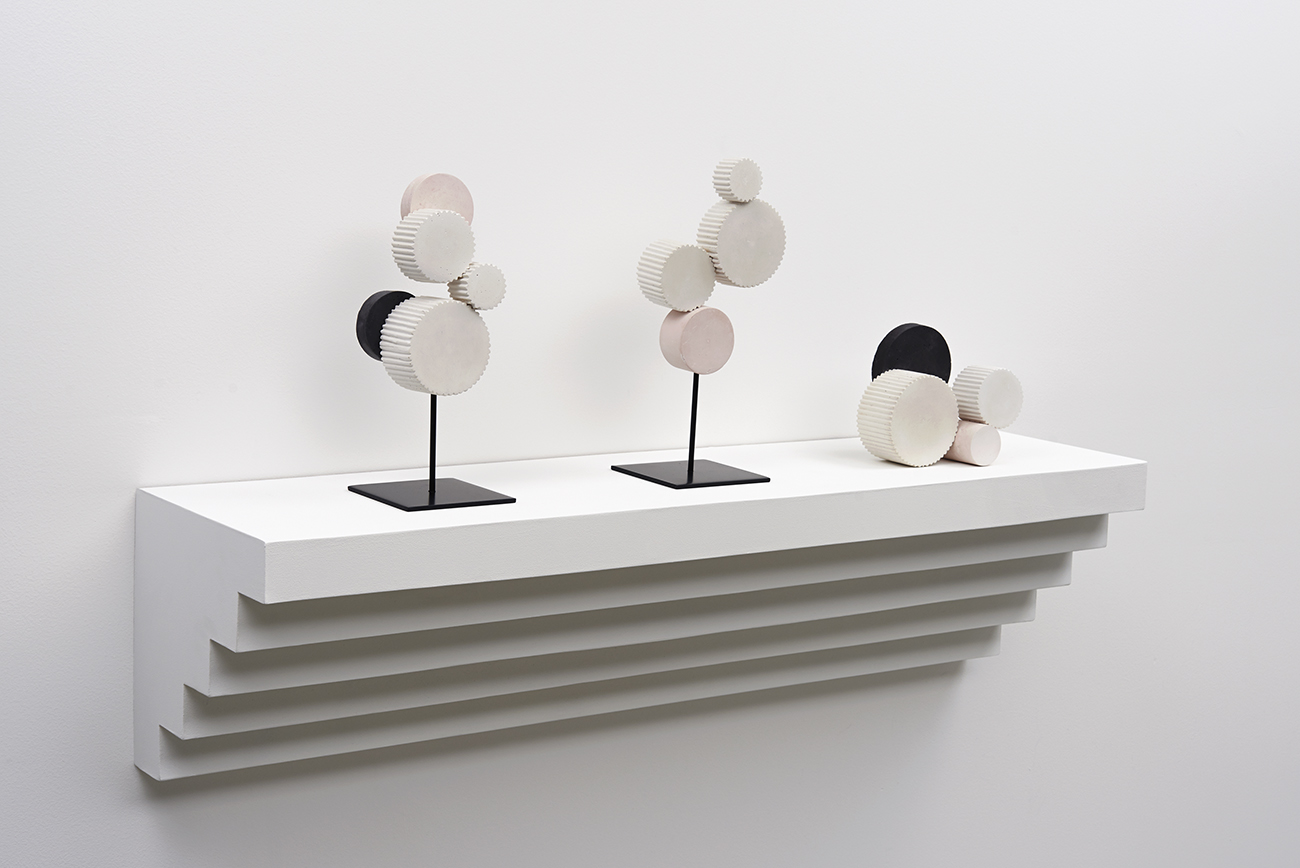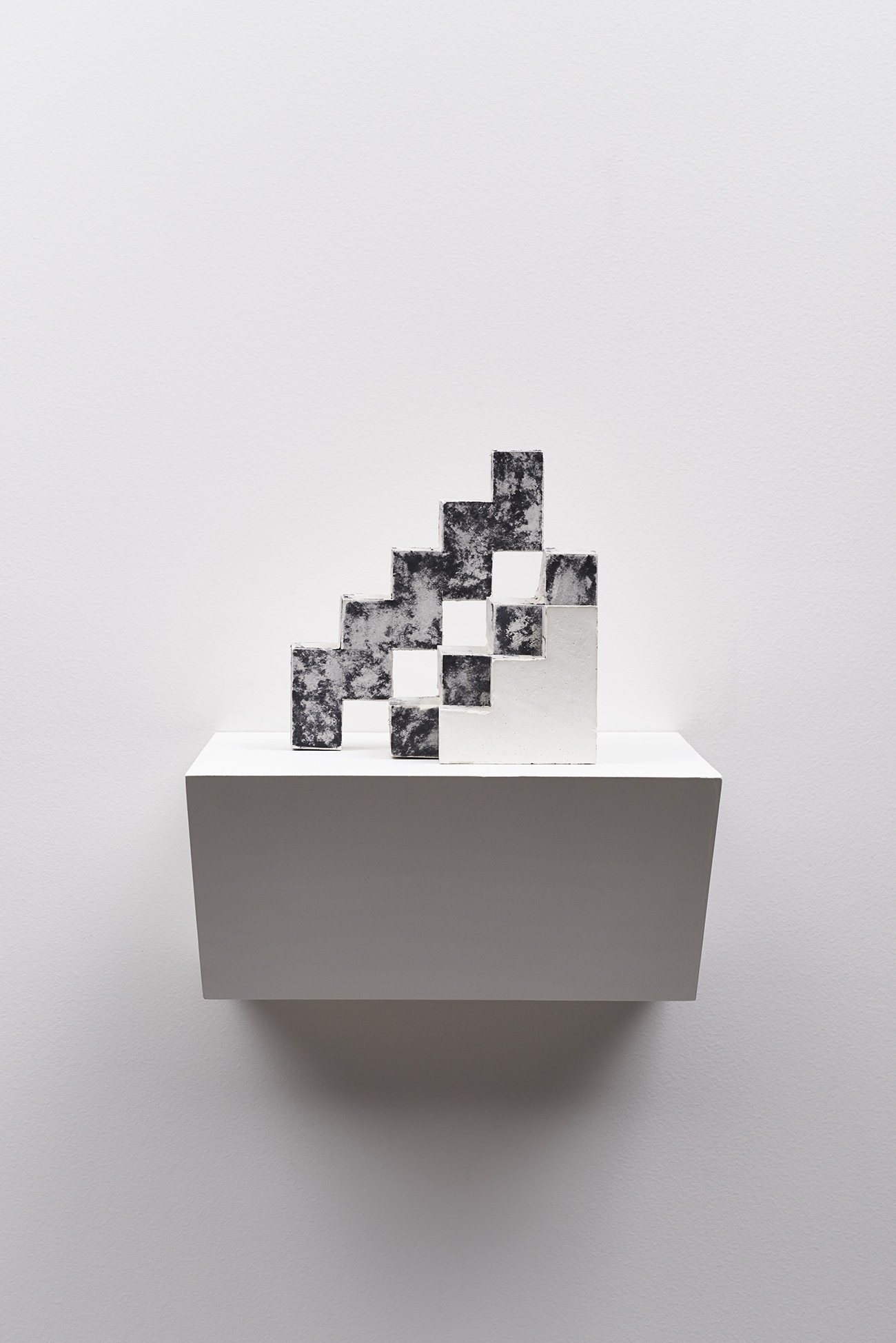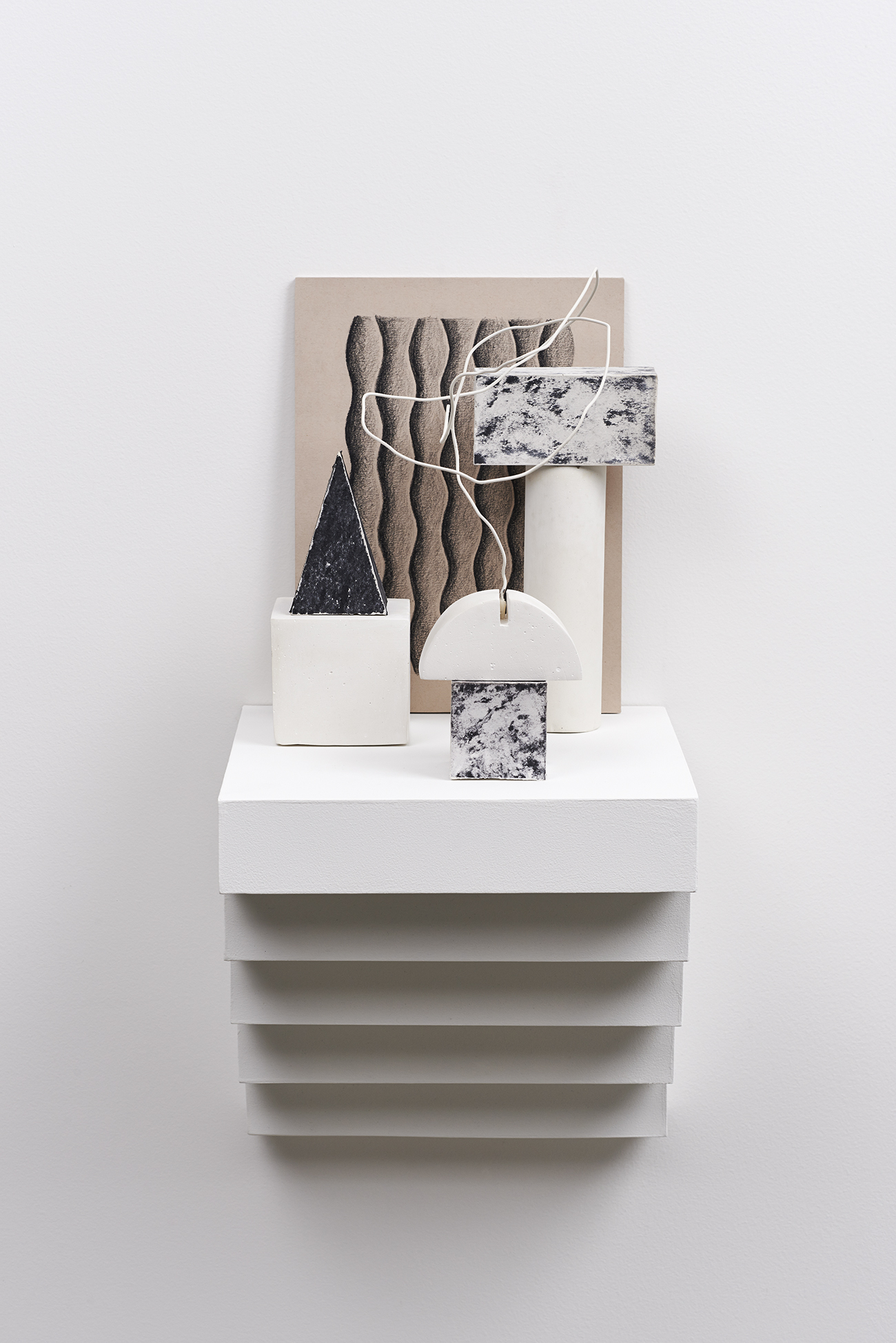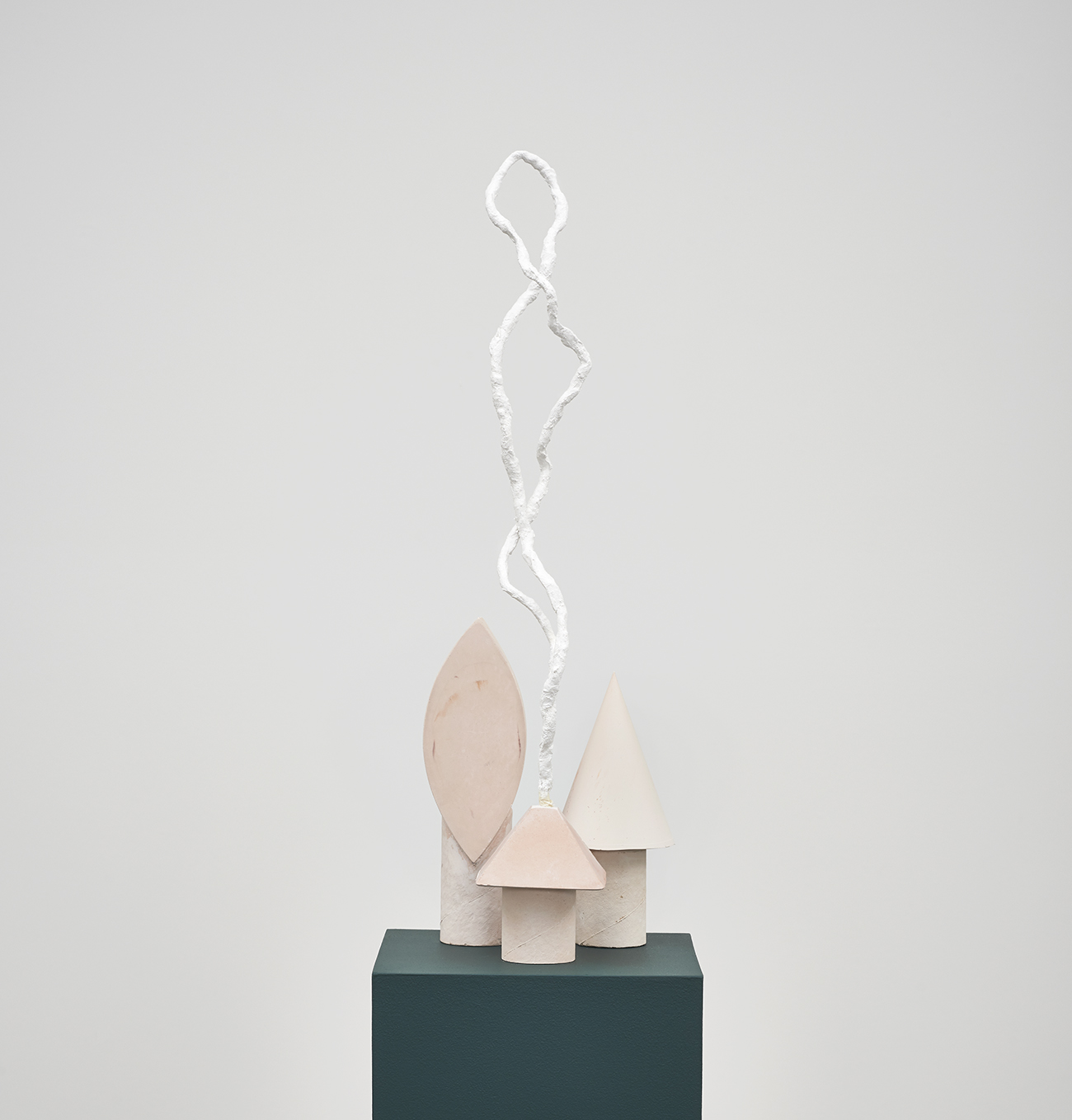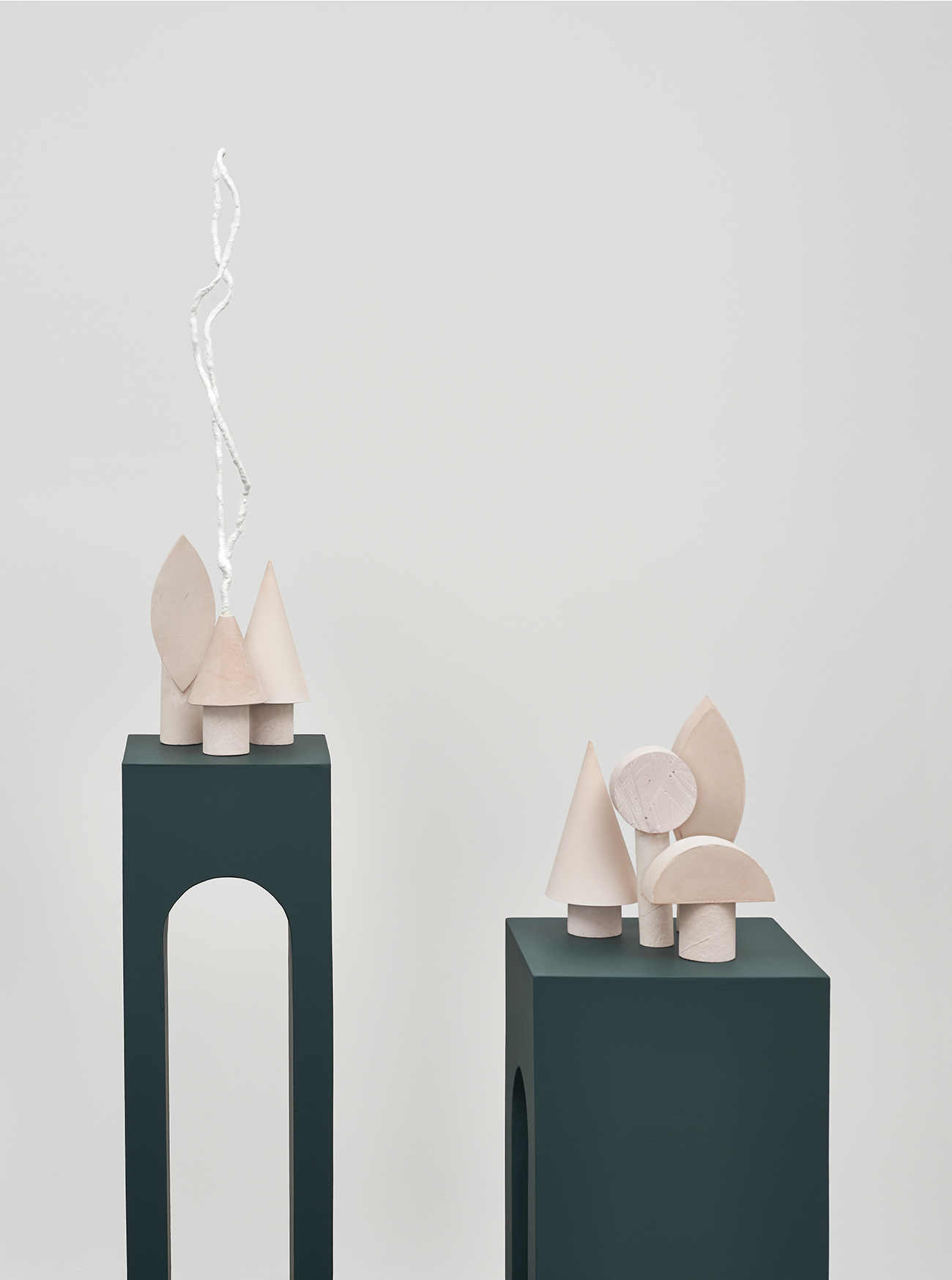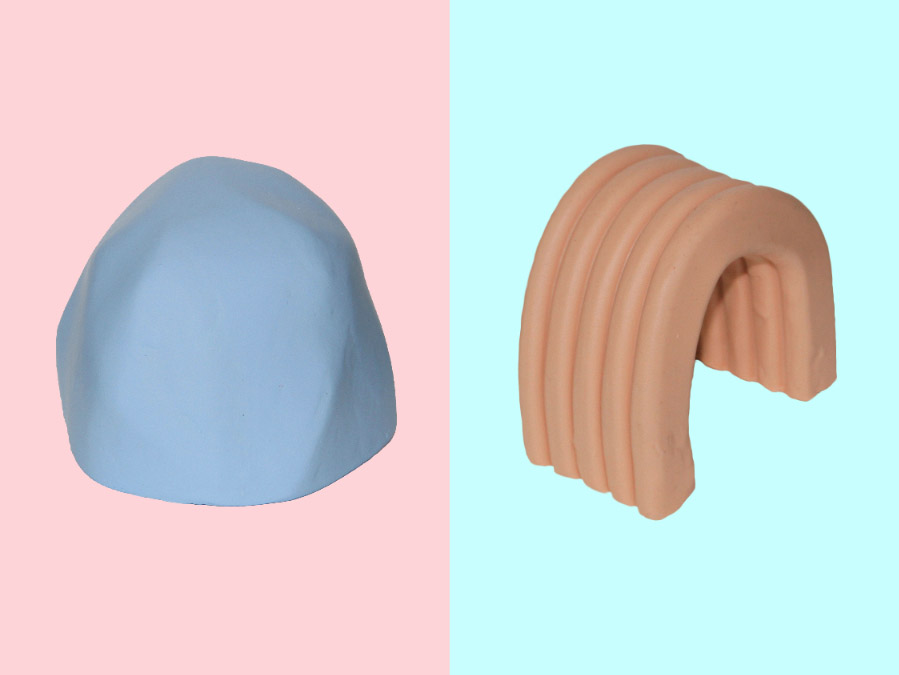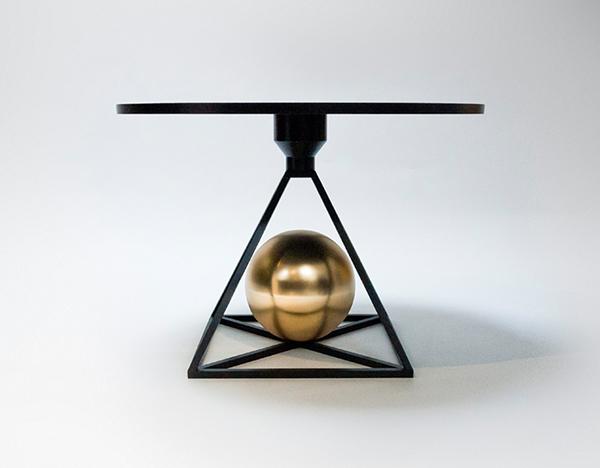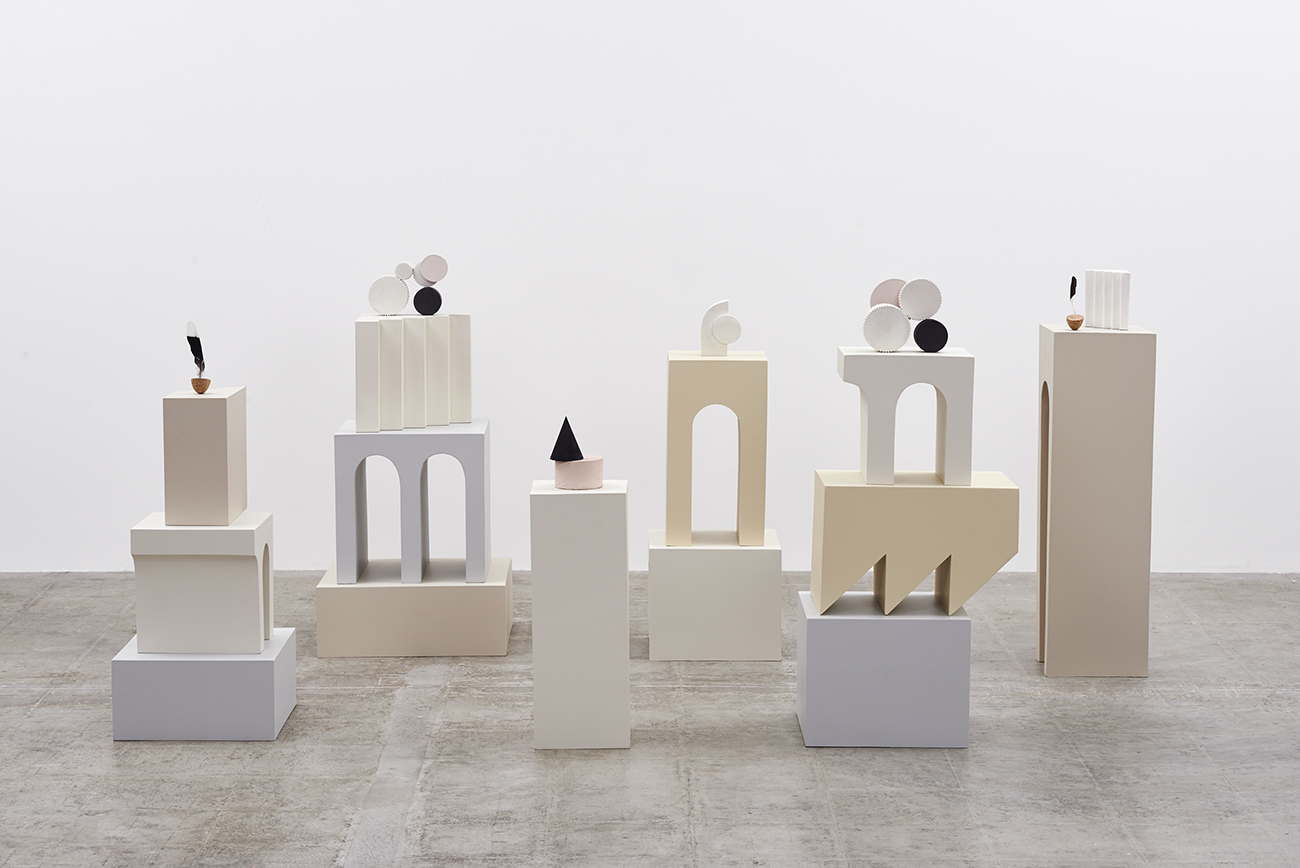
09.19.17
Up and Coming
An Emerging Melbourne Artist on Still Lifes, Surrealism, and More
One look at Sean Meilak’s Instagram, and you’ll see why the Melbourne artist has suddenly become our new talent to watch Down Under. Meilak has a way of incorporating and transfiguring familiar visual references and echoes — from antiquity to Surrealism to the Memphis group — into works that quietly hint at something less obvious or known. The geometric and architectural forms and the palette he’s recently been drawn to, he says, “reflect my broad range of interests in architecture, art, and design, while also enabling me to be experimental as to its outcome and its potential meaning within a gallery context.”
Meilak studied painting at Victorian College of the Arts in Melbourne, but considers his practice multidisciplinary — drawing, installation, video, and most recently, sculpture. His sculptural work was initially a byproduct of his painting: small plaster casts that look like columns, arches, bases, or pediments — all elements he’d made for a series of still-lifes. But the props “evolved into sculptural pieces in their own right.” Though his approach to them has changed, he continues to use pigment and plaster, which he values for both its practical immediacy and its ephemerality: “It’s a material often used in replicas of sculptures and in archaeology, and I like this connotation of it as a stand-in or surrogate for something imagined or possibly unknown.”
Archaeology is something of a repeated metaphor in Meilak’s work, a way to excavate and examine inner landscapes. Take his piece Archeology and Melodrama, from his solo show Marble Park earlier this year at Melbourne’s Niagara Galleries (which reps Meilak). He describes it as “a cluster of stacked architectural forms that reference, in part, the paintings of Morandi and De Chirico — some looking precarious or misplaced like ruins” while the title sets up an interplay between the silent mystery of ruins and the histrionics of melodrama. As Meilak says, “in melodrama, there is often a build-up, a sense of tension — precarious relationships, people on the edge, and ruin seems never far away. I like how there is something just under the surface — a past, a history, a personal archaeology — that is revealed with words and emotion rather than the tools of the archaeologist.”
It makes sense that Meilak also cites the cinematic melodramas of Douglas Sirk and Sirk aficionado Rainer Werner Fassbinder, along with the mannered atmospheres of Michelangelo Antonioni, as inspirations. What often comes through in Meilak’s work is the way that dream-like, stylized artifice can reveal feeling and sensation in a way that realism can’t.
We touched base with Meilak over email, as he gears up for a group show, Gardening is not a rational act, opening tomorrow at c3 Art Space, Melbourne.
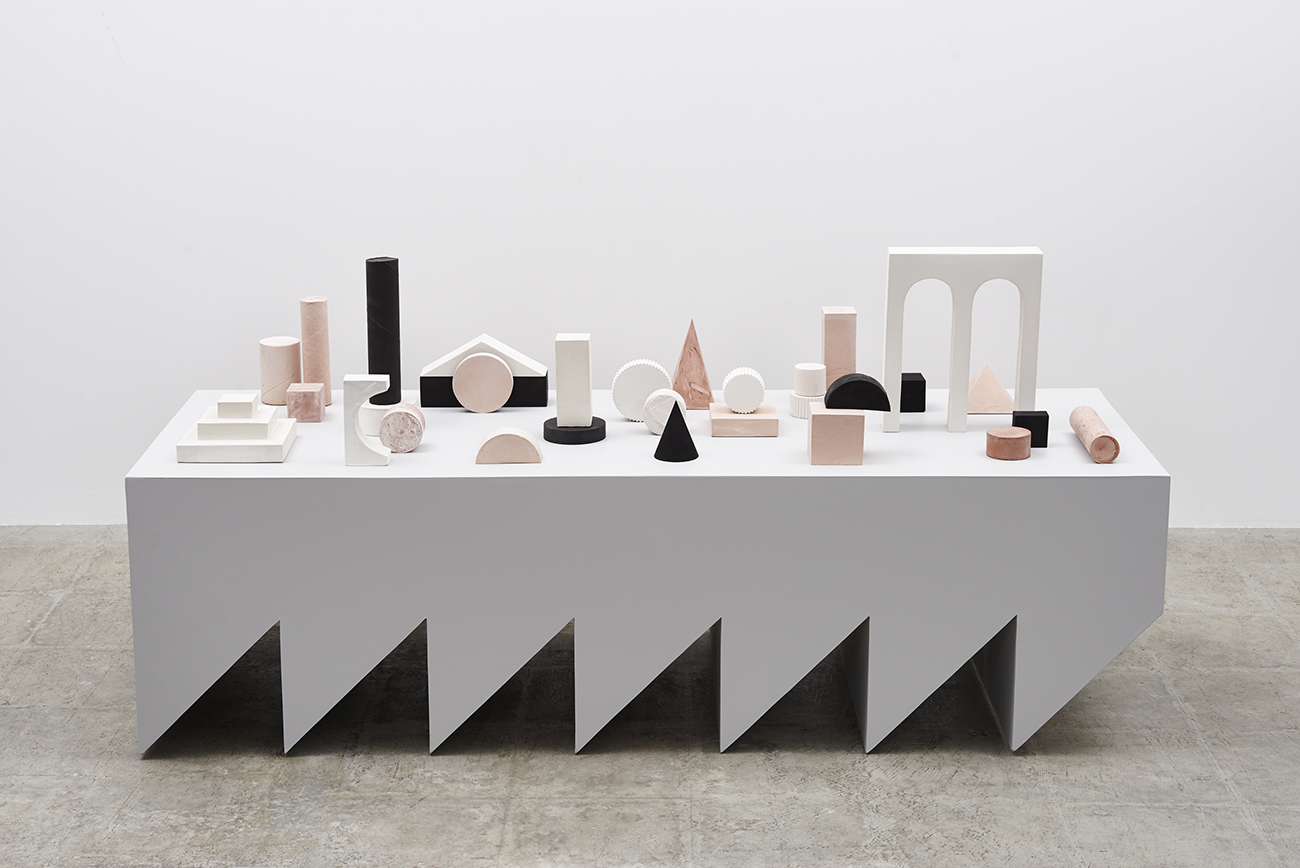
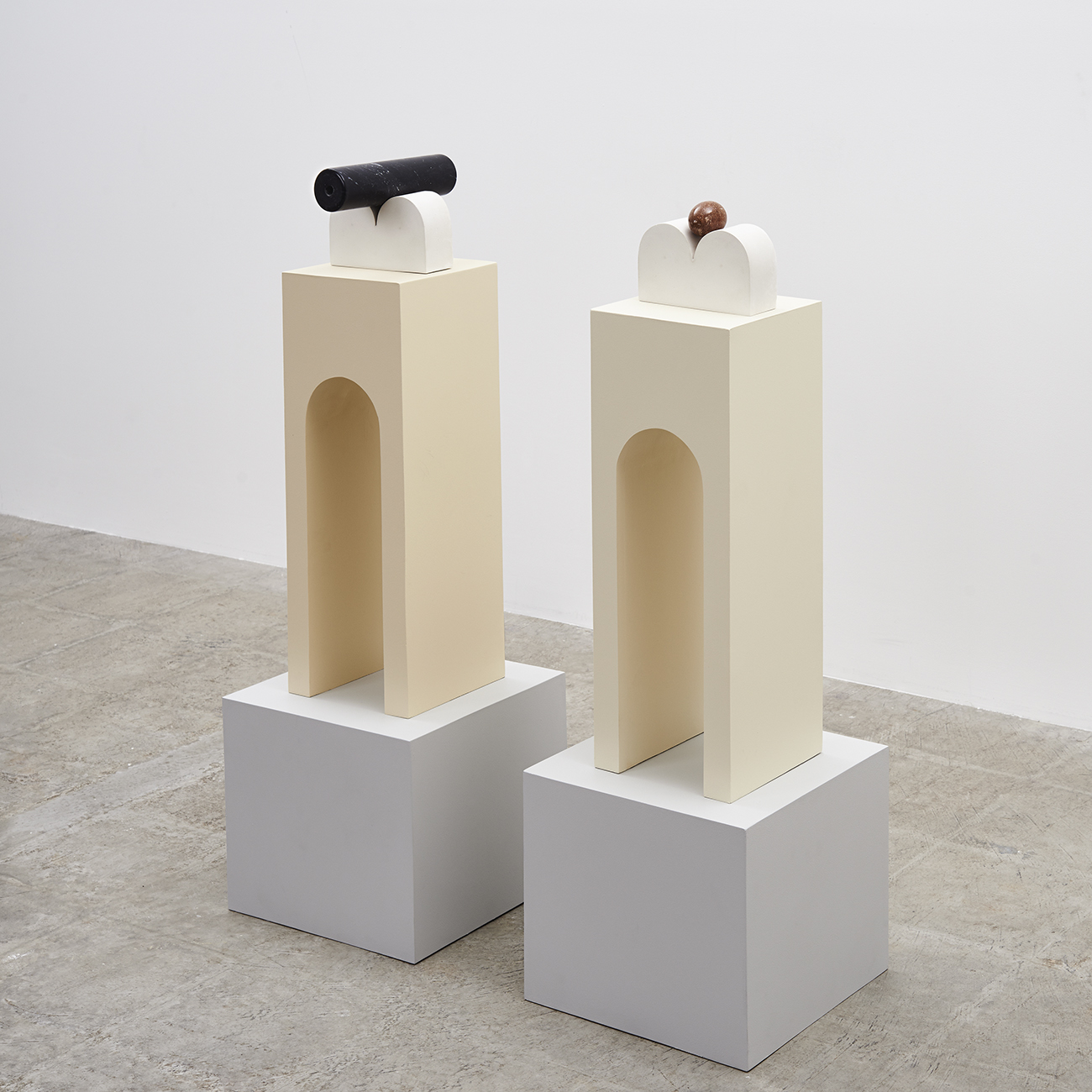
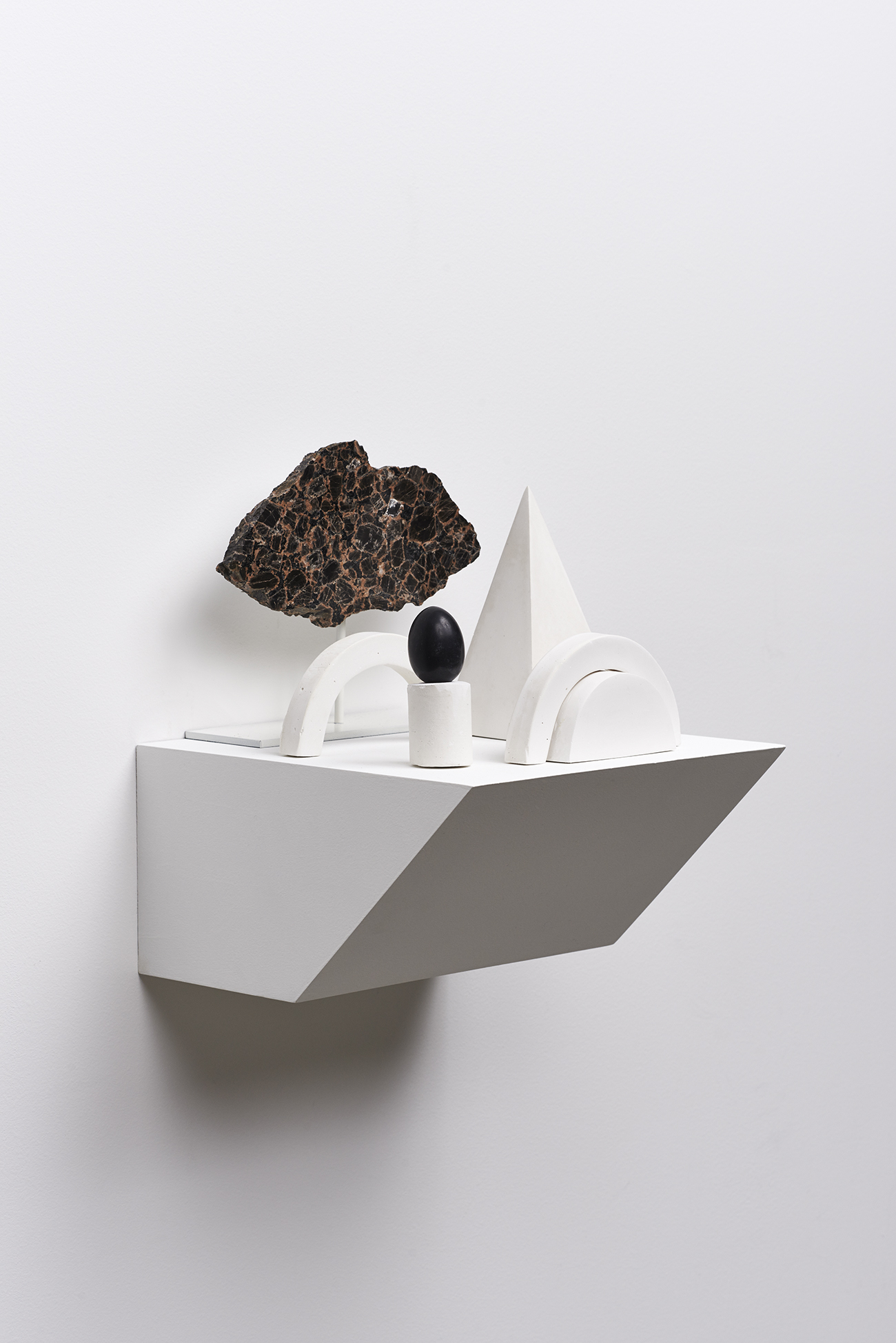
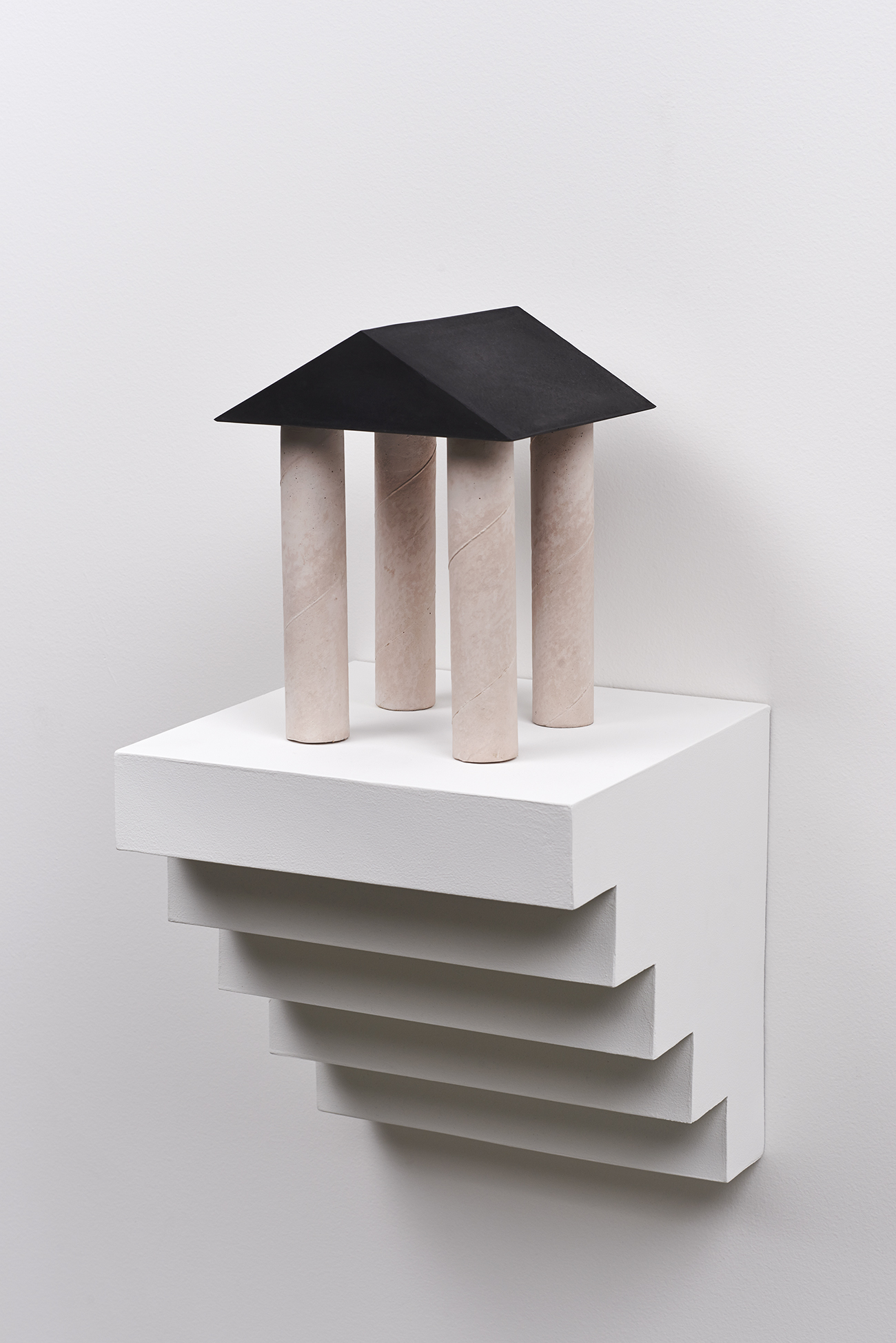
What inspired your Marble Park show earlier this year?
There were a number of things that influenced that exhibition. The starting point came about after accompanying my partner on a three-month artist’s residency in Italy a few years ago. We were mainly based in Tuscany but also spent a few weeks in Rome. It was the first time I had ever visited, and I was completely awestruck by the city — its archaeological sites and ancient ruins, in particular.
It was during this time that I was also looking at the still-life paintings of Morandi, and the metaphysical paintings of De Chirico, and in Italy, I had the opportunity to see some great examples of their work. I started working on some sketches and compositions of found objects and small maquettes that I was making out of wire, plastic bags, pieces of rock and stones — things readily at hand. Upon my return to Melbourne I began to elaborate on these initial sketches I had made, continuing my train of thought and interest in still life, while also expanding into new directions and introducing new materials and processes that incorporated sculpture and installation. The Marble Park exhibition emerged from this process of exploration.
I was very much interested in blurring the boundaries between still life, set design and mise-en-scene in cinema. I was also interested in examining artifice, the artifact, and the cultural constructs of display, as well as exploring ways of constructing compositions through various different mediums. I wanted the show to explore the many things that had inspired and influenced me over the years, a kind of open-ended summation of my interests at that time.
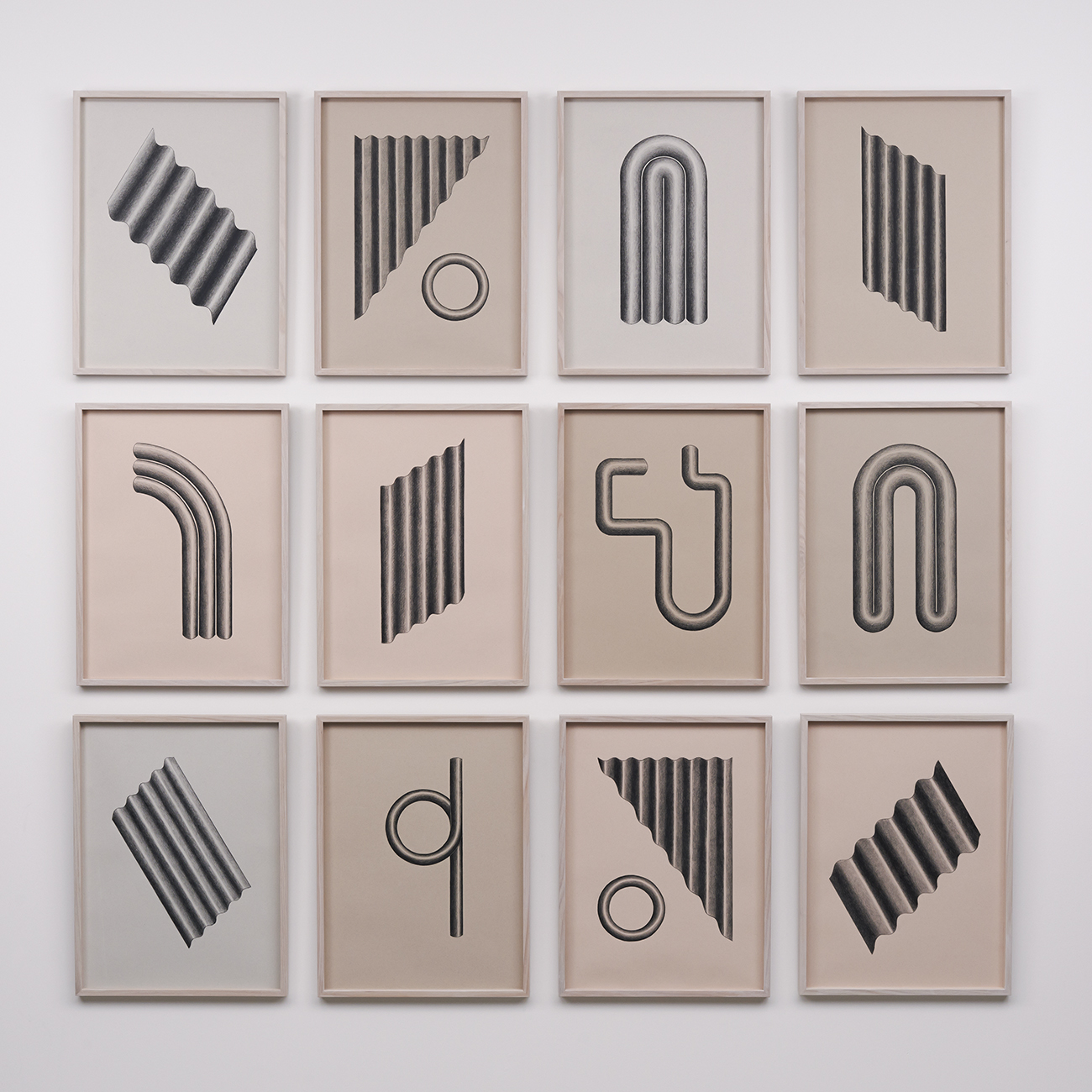
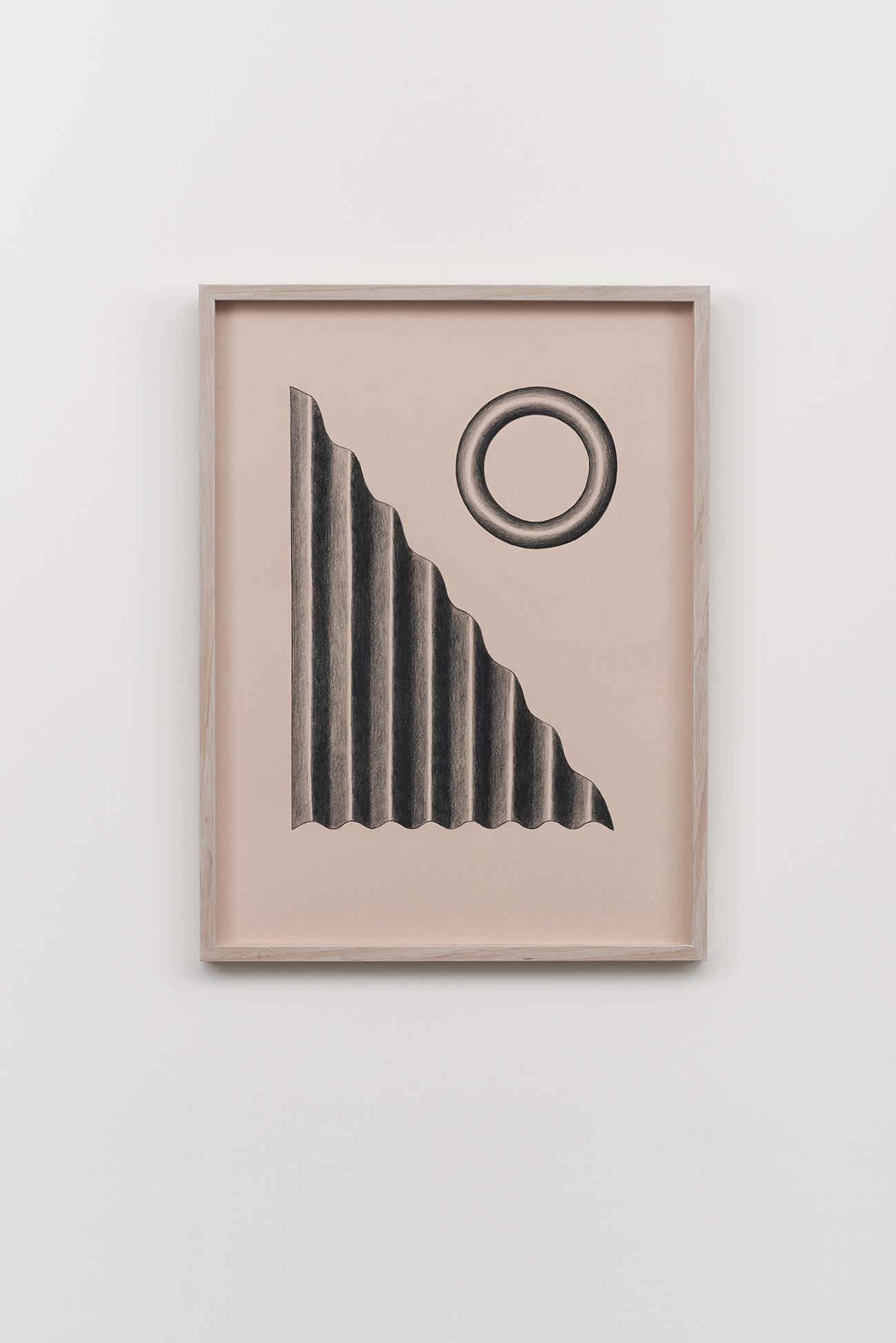
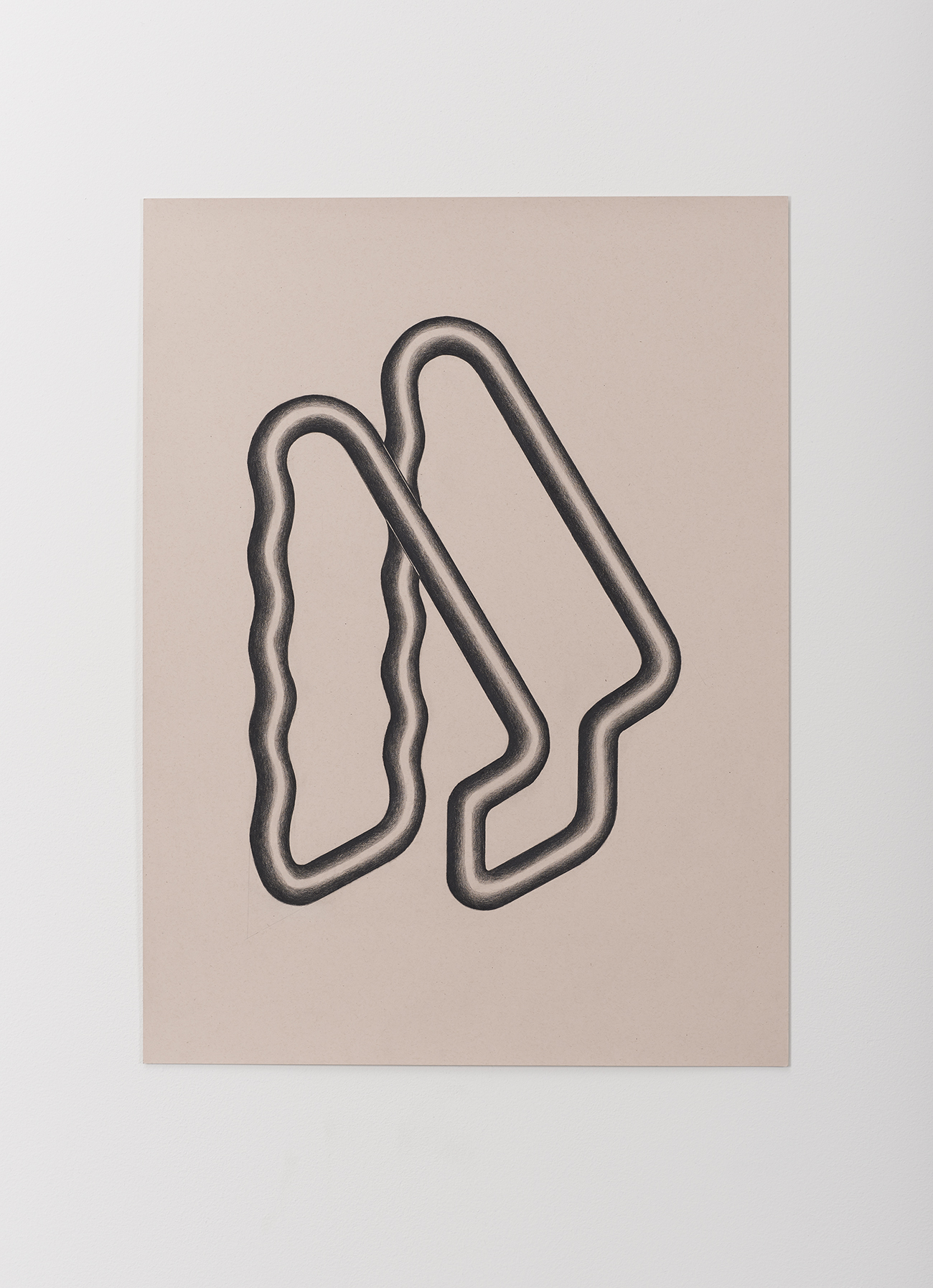
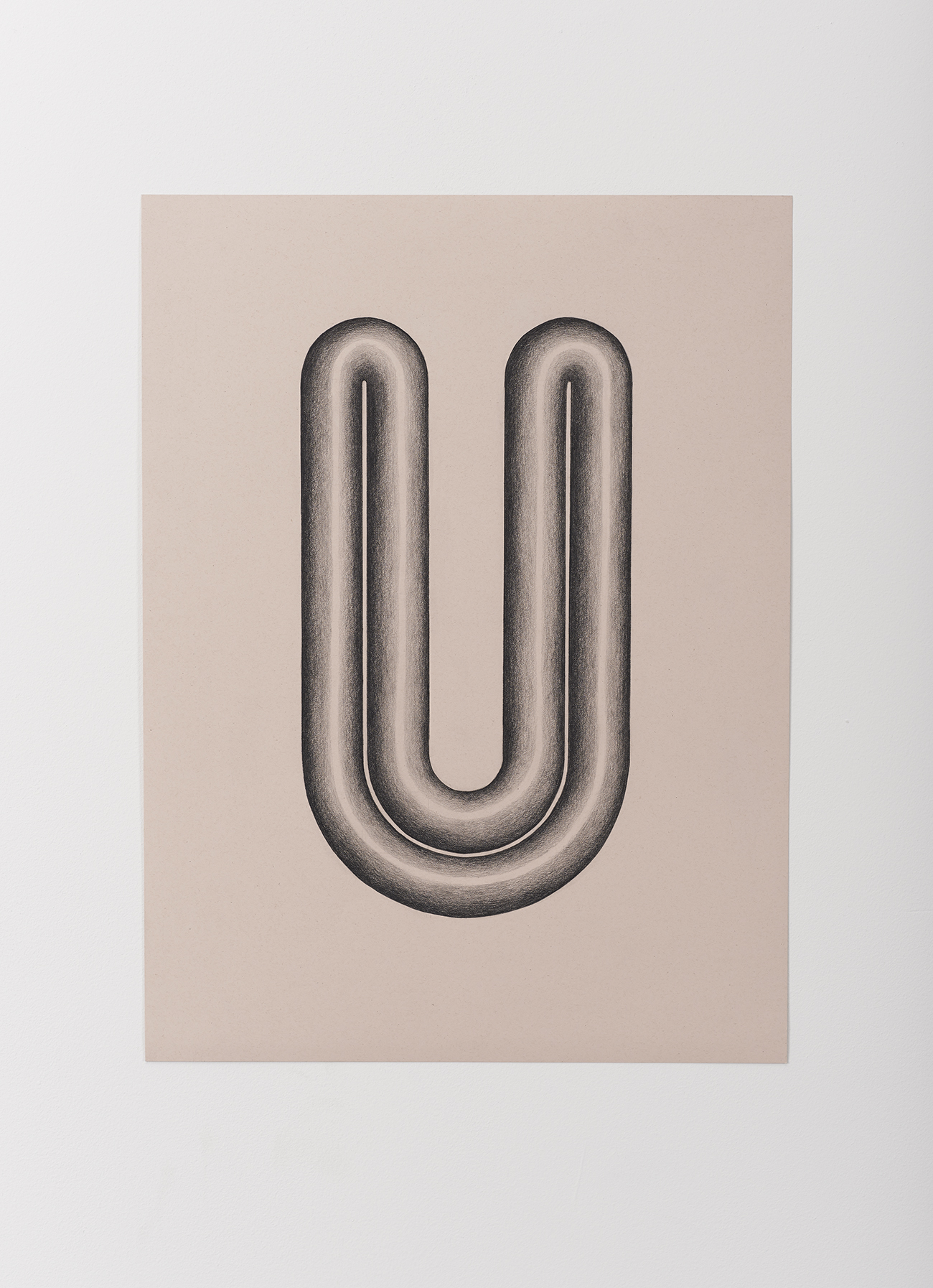
What inspires your aesthetic in general?
My work is influenced and inspired by a diverse range of art movements, artists, architects, designers and filmmakers — notably modern and postmodern art, design and film and also the art and architecture of ancient Rome. I have always been drawn to the dream-like spaces of metaphysical and surreal painters like Giorgio De Chirico, Giorgio Morandi and Rene Magritte, and the theatrical and psychological environments created in films such as Red Desert by Michelangelo Antonioni and Fassbinder’s Querelle. Design too, has been very influential on my work I think. In particular, Eileen Gray and design movements such as the Bauhaus and Memphis, and also Modernist architects such as Gio Ponti and Luis Barragan.
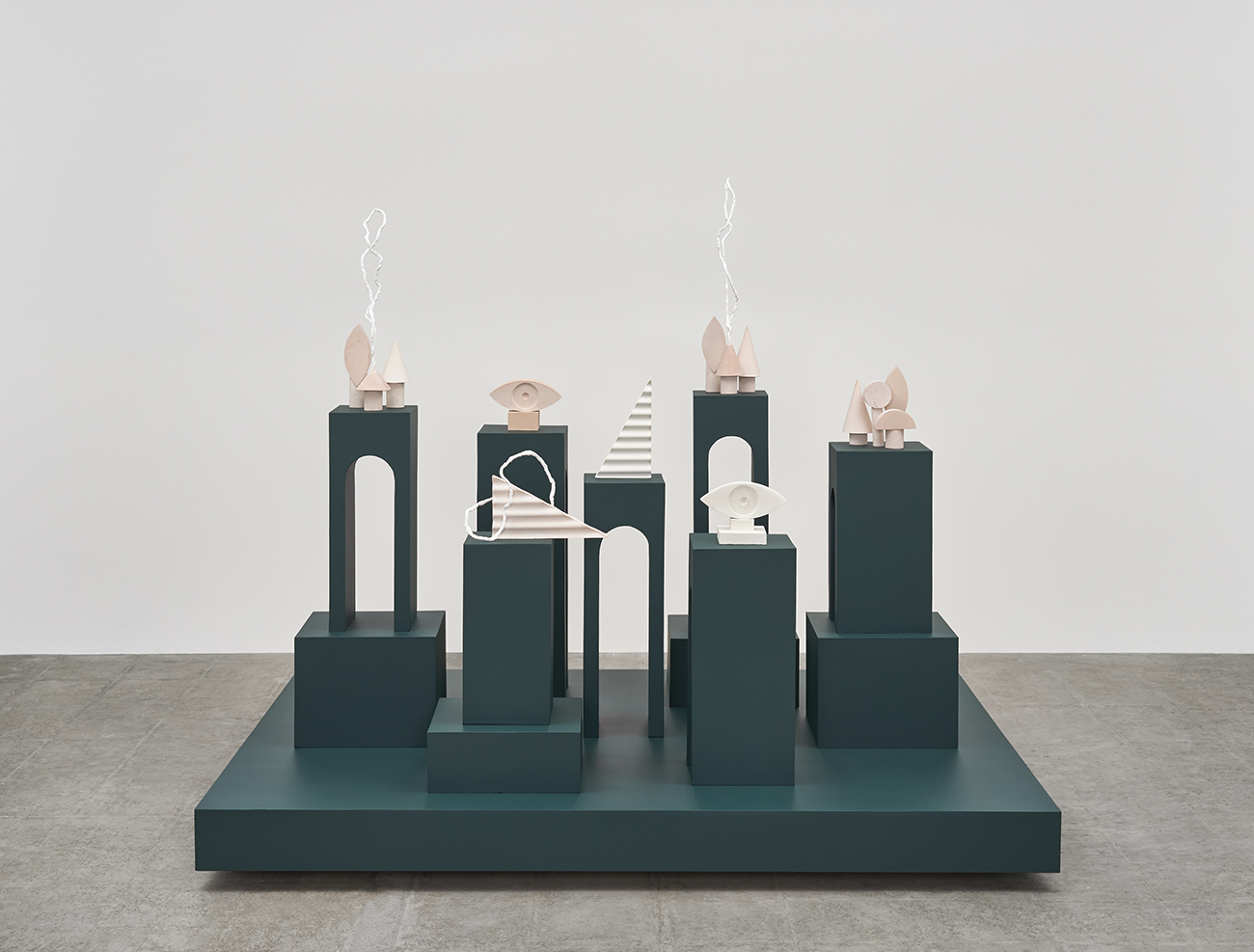
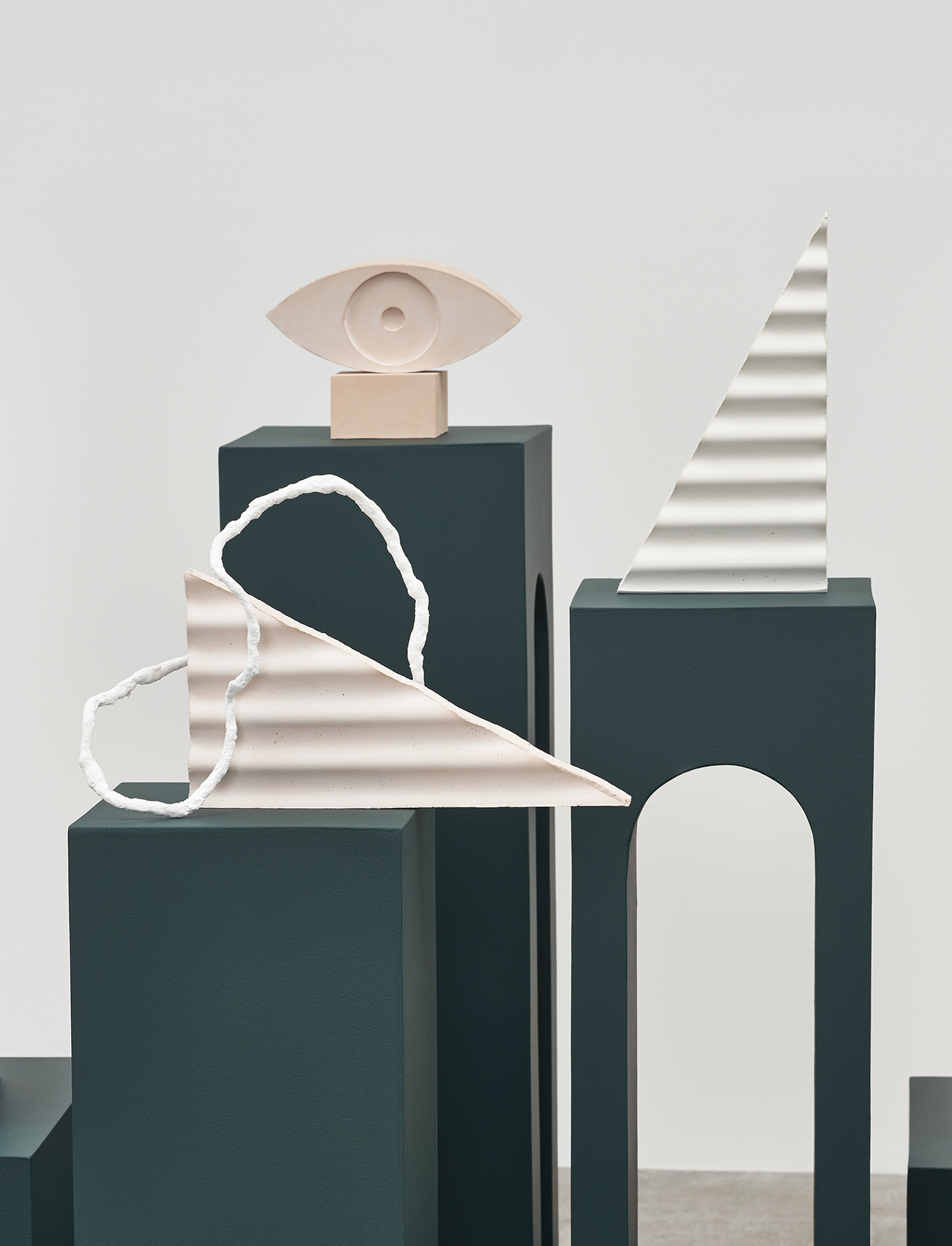
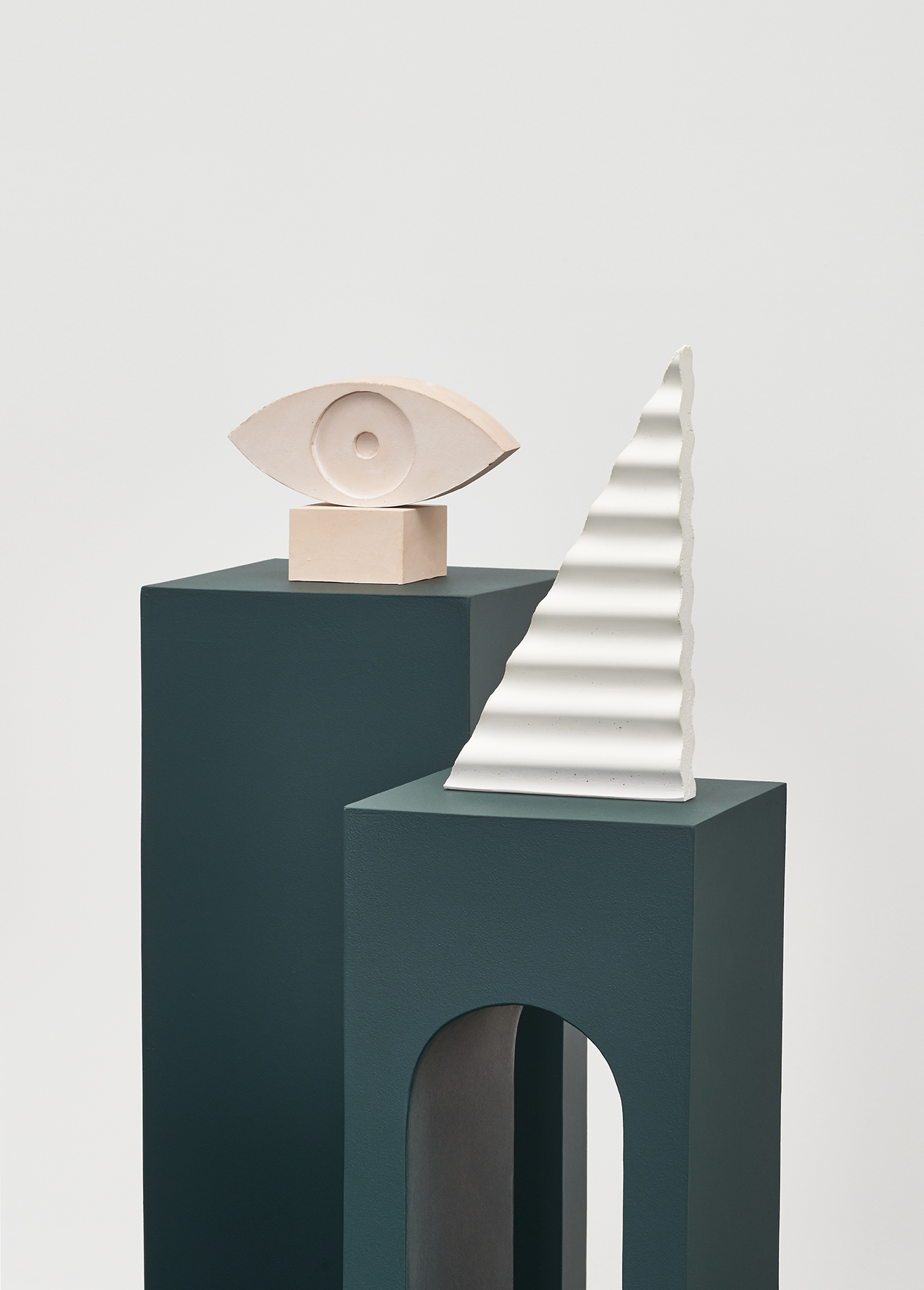
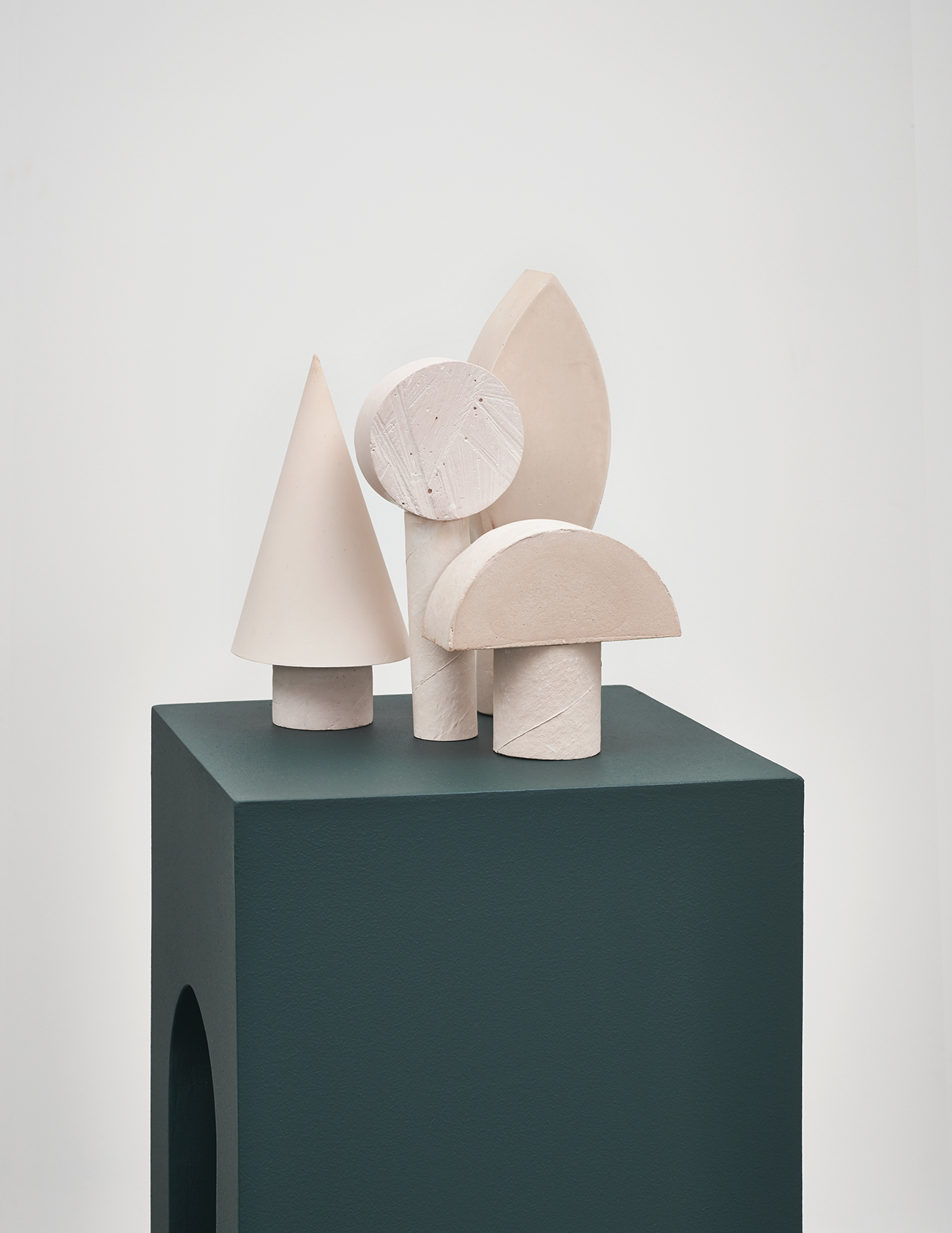
What is your next project? What’s motivating you in your new work?
I have recently completed a sculptural installation for a group exhibition about gardening titled Gardening is not a rational act on show at c3 Art Space, Melbourne, from September 20 through October 15, curated by Melbourne artist Tai Snaith. This new work titled Study for a Metaphysical Garden is a sculptural installation that looks at the theatrical and psychological space of classical and modernist gardens and explores the idea of the labyrinth, the metaphysical, and the geometry and order of Italian gardens of Ancient Rome, Renaissance and Baroque periods.
The work takes as a starting point the dream-like and psychological spaces of the metaphysical paintings of De Chirico and the renaissance garden Sacro Bosco or Garden of Monsters. The garden was rediscovered and filmed by Surrealist painter Salvador Dali and art historian Mario Paz in 1949 and became popular amongst postmodernists for its labyrinthine structure and potential for taking on multiple themes and meanings.
An arrangement of plinths painted dark green, have the effect of both topiary and architectural forms, and are topped with small plaster and mixed media sculptures to reference the fountains, follies, and sculptures of ancient Rome, Renaissance and Baroque gardens as well as the art and architecture of the modern and postmodern periods. I love gardening and visiting gardens when I travel so making this work has been a great opportunity explore this interest.
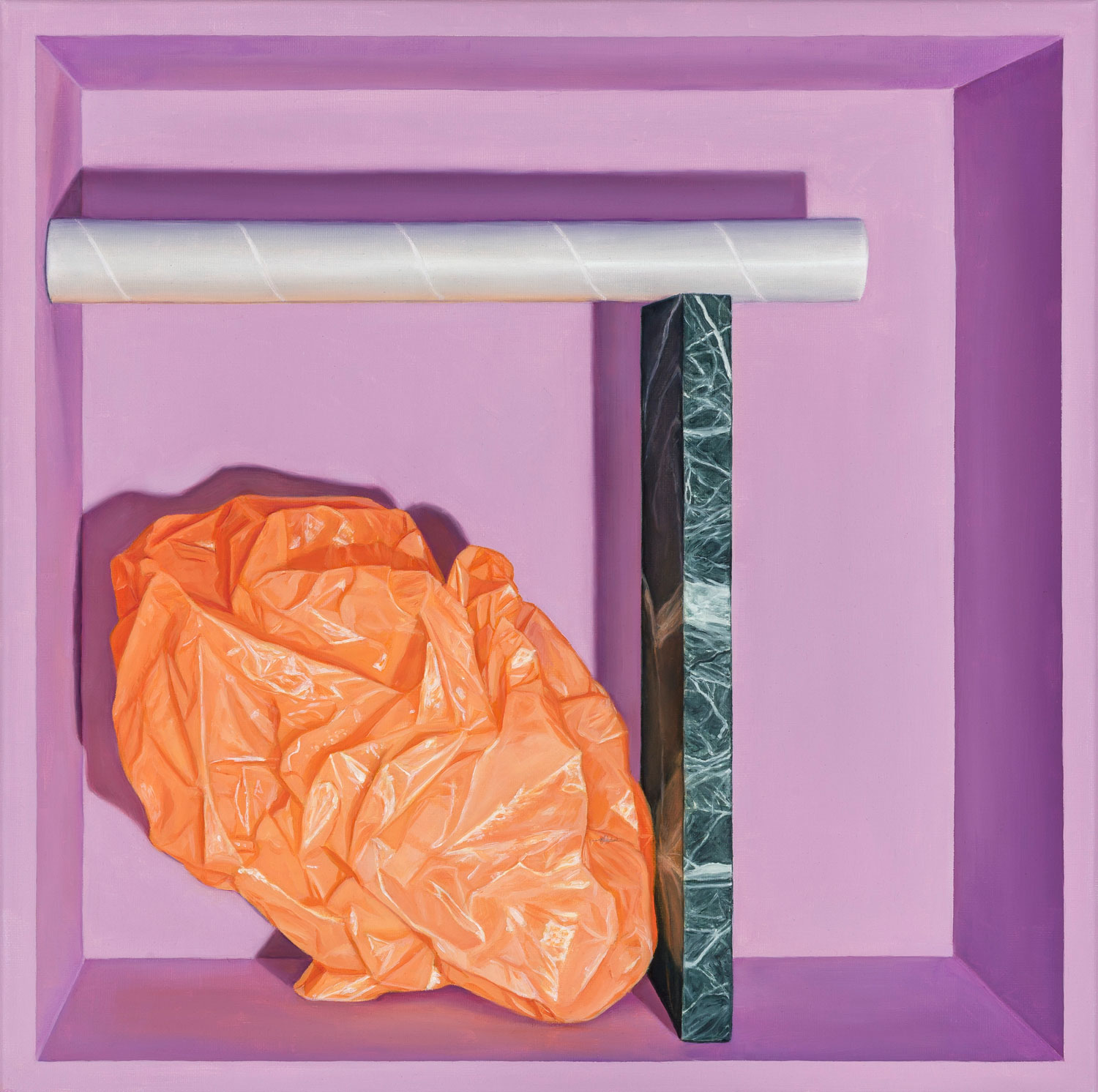
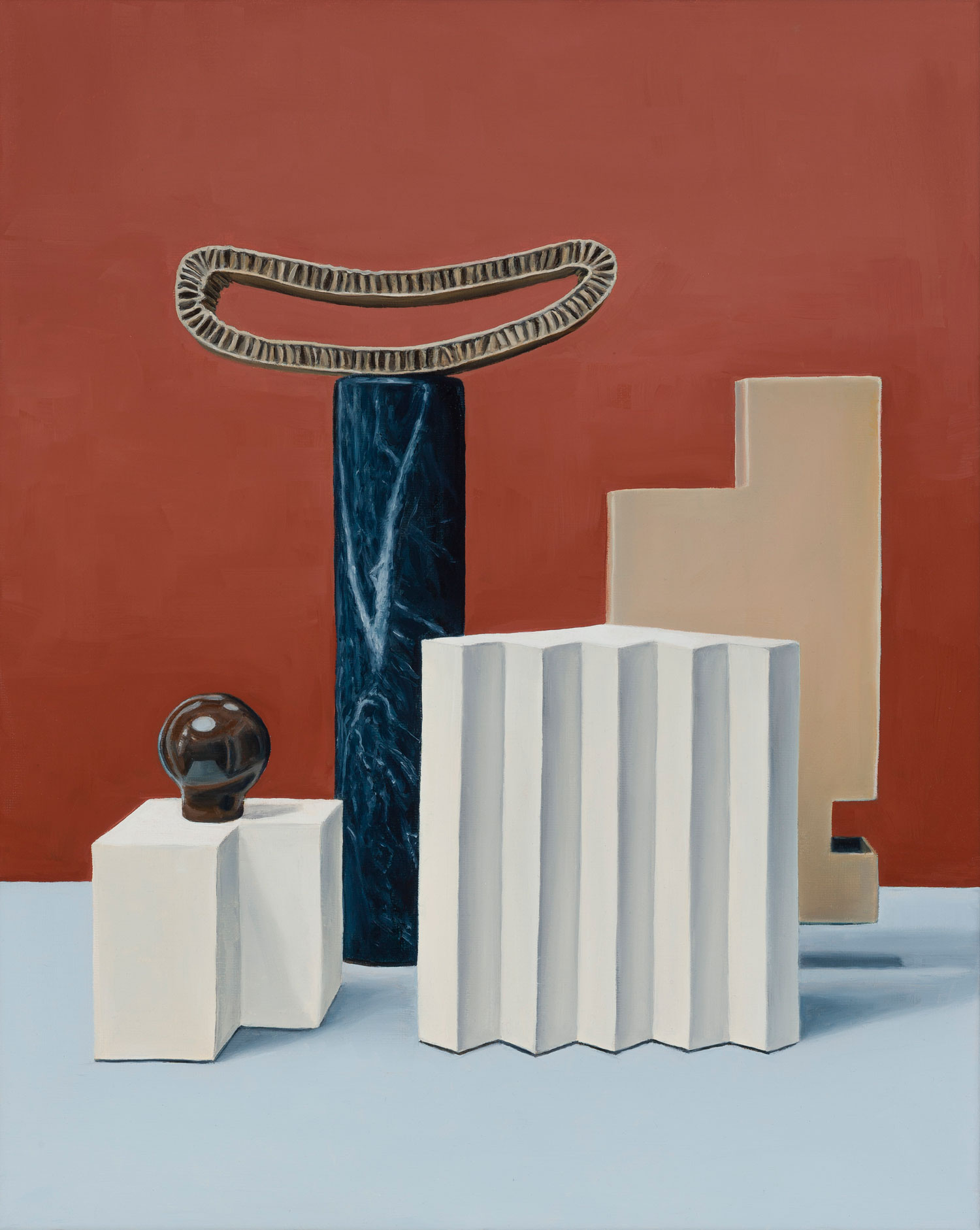
What do you keep around your studio or home for inspiration?
I always have a lot of books around in my studio for inspiration – on art, architecture, film and design, and I’m always pinning things up on the wall – photos I like, paintings, images of sculptures – little sketches I’ve made. It’s a productive and ordered chaos – your typical studio. I also like having plants around both at home and in the studio. Having a garden at home provides a very healthy counterpoint to art making although it’s not entirely unrelated and I can often see correlations in my garden and in the studio at times.
Most inspiring place you’ve ever been to:
Rome would most definitely be one of the most inspiring cities I’ve ever been to and the Pantheon is such an incredible structure. Standing in the center and looking up at the amazing dome and the huge opening to the sky was a truly inspiring experience.
Dream place to install your work?
A palazzo or a modernist villa. Each would be equally amazing.
Favorite Google Image search:
I’m really into gardening and collecting plants, so it’s usually a plant. At the moment, I’m into palm trees. I’ve become a bit of a palm spotter lately!
